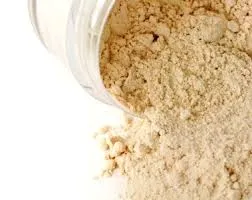Chemical Treatment of Water Ensuring Clean and Safe Supplies
Water is an essential resource for life, and its cleanliness is paramount for health, environmental sustainability, and economic development. Amid growing concerns about water pollution and scarcity, chemical treatment of water has emerged as a critical methodology for ensuring safe drinking water and protecting aquatic ecosystems. This article delves into the processes, benefits, and implications of chemical treatment in water management.
Understanding Chemical Treatment
Chemical treatment of water involves the addition of chemicals to facilitate the removal of impurities, pathogens, and contaminants. This process can be applied to various sources of water, including surface water (e.g., rivers and lakes) and groundwater. The primary objectives of chemical treatment are to disinfect water, improve turbidity, eliminate organic and inorganic pollutants, and adjust pH levels to ensure water quality complies with health standards.
Common Chemical Treatments
1. Chlorination One of the most widely used methods, chlorination involves adding chlorine or chlorine compounds to water, effectively killing bacteria and viruses. This method is cost-effective and leaves a residual effect, which helps in preventing future microbial contamination. However, chlorination can also generate harmful by-products, such as trihalomethanes, which raise health concerns.
2. Coagulation and Flocculation This treatment process uses chemicals called coagulants (often aluminum sulfate) to bind small particles together, forming larger aggregates (or flocs) that can be easily removed. This method is crucial for reducing turbidity and improving the clarity of water before it undergoes further treatment or distribution.
3. Ozonation Ozone (O₃) is a powerful oxidizing agent that effectively kills bacteria, viruses, and other pathogens. Unlike chlorination, ozonation does not leave harmful by-products and does not add taste or odor to the water. However, ozone must be generated on-site, which can increase operational complexity.
4. Reverse Osmosis (RO) While technically not a chemical process in the traditional sense, RO often integrates pre-treatment chemicals to prevent membrane fouling. This method employs semi-permeable membranes to remove a wide array of contaminants, including dissolved salts, microplastics, and heavy metals, making it effective for desalination and treating polluted water.
chemical treatment of water

5. pH Adjustment The pH level of water can be adjusted using acids (such as sulfuric acid) or bases (like sodium hydroxide) to achieve optimal conditions for other treatment processes. Maintaining a balanced pH is vital for ensuring chlorine efficacy and preventing metal corrosion in distribution systems.
Benefits of Chemical Treatment
The benefits of chemical treatment in water purification are vast. Firstly, it significantly reduces the prevalence of waterborne diseases, thereby enhancing public health. For regions suffering from pollution or contamination, chemical treatment systems can restore water quality and ensure compliance with safety standards. Additionally, these methods can improve aesthetic qualities such as taste and color, making water more appealing for consumption.
Moreover, the introduction of advanced chemical treatment technologies can enhance water recycling and reuse, contributing to sustainable water management practices. In urban areas, where demand often exceeds supply, treated wastewater can be repurposed for agricultural, industrial, or recreational uses, thereby alleviating pressure on freshwater resources.
Considerations and Challenges
Despite its advantages, chemical treatment of water also faces challenges. The use of chemicals can lead to environmental impacts, particularly if not managed properly. Chemical residues can contaminate ecosystems if wastewater is not adequately treated before discharge. Moreover, the reliance on chemical treatments can mask underlying issues related to water source pollution and infrastructure integrity.
Public perception of chemical treatments can also be a hurdle. Concerns about chemical safety and potential health risks associated with treated water often necessitate transparent communication and public education. Building community trust is crucial for the successful implementation of water treatment systems.
Conclusion
In conclusion, chemical treatment of water is a vital component of modern water management strategies. By employing various chemical processes, communities can ensure access to clean and safe water, protect public health, and support environmental sustainability. Ongoing research and technological advancements will enhance these treatments' efficiency and effectiveness, paving the way for innovative solutions to meet the global water crisis. As we navigate the complexities of water treatment, a balanced approach that considers both chemical and ecological perspectives will be essential for sustainable water management in the future.

